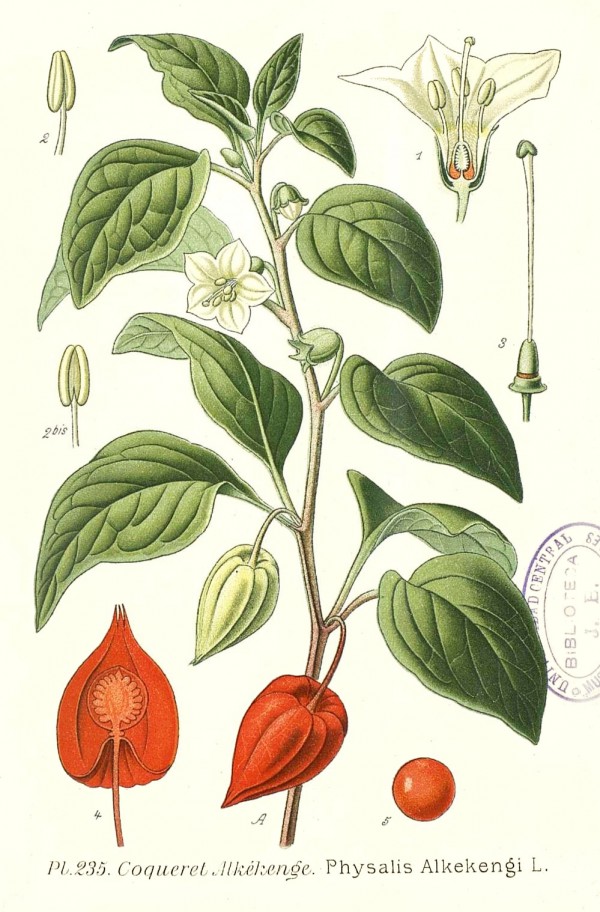Physalis alkekengi L. - Solanaceae - Chinese lantern, Japanese lantern, Lampionblume, Blasenkirsche
Perennial herb, 40-80cm tall, native to Asia, Europe, naturalized and cultivated elsewhere (as ornamental); leaves narrowly to broadly ovate; flowers greenish white, campanulate; fruiting calyx orange or red, ovate, rounded, 10-ribbed; fruit berry shiny, orange-red, globose, 1-1.5 cm in diameter… „The fruit of this species is edible and is used medicinally as a febrifuge.“
http://www.efloras.org/florataxon.aspx?flora_id=2&taxon_id=200020559
„It is a popular ornamental plant, though it can be invasive with its wide-spreading root system sending up new shoots some distance from where it was originally planted. In various places around the world, it has escaped cultivation.“ http://en.wikipedia.org/wiki/Physalis_alkekengi
„Physalins are steroidal constituents of Physalis plants which possess an unusual 13,14-seco-16,24-cyclo-steroidal ring skeleton.“ http://en.wikipedia.org/wiki/Physalin
„P.alkekengi has been used as an abortive plant in Iranian traditional medicine for many years… To investigate the effects of P.alkekengi on the fertility rate in female rats… animals received plant extract at dose of 150 mg/kg on days 1-5 of pregnancy… Data showed that administration of P. alkekengi extract on days 1-5 of pregnancy significantly decreased the number of implantation sites, number and weight of neonates. Conclusion: These results suggest that the extract produced anti-fertility effect probably by inhibiting implantation.“
[Anti-fertility effects of Physalis alkekengi alcoholic extract in female rat. Montaserti, A., Pourheydar, M., Khazaei, M., Ghorbani, R., Iranian journal of reproductive medicine, 5(1), 2007, 13-16]

Masclef,A., Atlas des plantes de France, vol.3 t.235
http://plantgenera.org/species.php?id_species=787341
Physalis alkekengi © Rolf Marschner (2018),
www.botanische-spaziergaenge.at